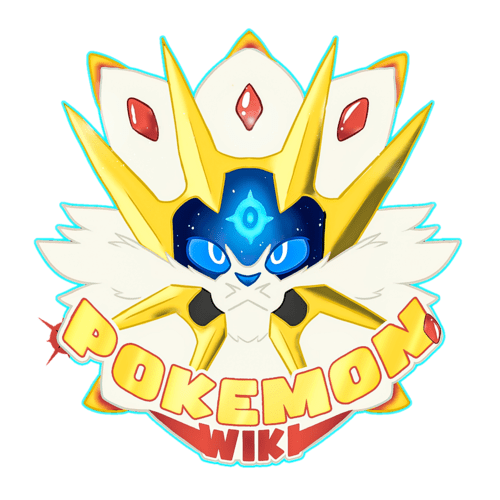Bulbasaur was one of the earliest Pokémon released.
- This article is about Nintendo's franchise Pokémon. For other uses, see Pokémon (Other uses)
Pokémon is the name of a series of video games developed by Game Freak and published by Nintendo. Although several spinoffs for other Nintendo systems have been released, such as Pokémon Puzzle League, the main series usually takes place on the handheld Game Boy platform, for which 11 games have been released, with 2 new games, Diamond and Pearl, being released in April 2007. Pokémon was created by a Japanese man named Satoshi Tajiri, who still has a hand in production of the games.
Gameplay
The main Pokémon games all center around the strategic manipulation of creatures called Pokémon, from which the series takes its name. In the games, the player takes the roll of a male or female human who has just received a license to catch Pokémon. The player usually goes to the local Pokémon laboratory to ask for a first Pokémon. Usually, the player is given a choice of three Pokémon; a grass Pokémon, a fire Pokémon, or a water Pokémon. A person possessing a Pokémon for the purpose of battling is called a Pokémon trainer.
Using this first Pokémon, players are now usually free to set off on their own adventure, in which they will collect badges by defeating gym leaders (powerful Pokémon battlers specially appointed by the Elite Four). Once the player has collected enough badges, they can battle the Elite Four — four people considered to be the best Pokémon trainers in the world.
Another goal of the game is to try to catch every Pokémon available (the number varies between games; in the first era, there was 151 Pokémon available, increasing with every era). If a player can collect every Pokémon, they can consider themselves a true "Pokémon Master".
Pokémon can be caught by weakening them with other Pokémon, and then absorbing them into a Poké Ball, where they can be stored for future use, to battle and catch more Pokémon. Each Pokémon has a health gauge, and whomever's gauge runs out first loses; however, a trainer can have several Pokémon, so if one Pokémon's gauge reaches zero (called "Fainting"), they can send out another Pokémon. Each trainer can carry a maximum of 6 Pokémon, although many more can be caught and stored in a PC. In order to try to knock out the opposing Pokémon, Pokémon attack each other. Pokémon can learn up to four attacks, although there are many more attacks that they are capable of learning.
Currently, there are over 300 known Pokémon, with more being available for catching with the release of each Pokémon era.
History
Pokémon was the brainchild of a Japanese man named Satoshi Tajiri, born August 28th, 1965. As a child, Tajiri was fascinated with insects, and loved to hunt and collect different species of them, as well as devise new methods to attract them.
Eventually, whilst Tajiri was in his early teens, most of the areas where Tajiri liked to hunt for bugs were replaced with modern establishments or demolished. No longer having the opportunity to collect insects, Tajiri created a fantasy in his mind about his adventures, his thoughts eventually evolving into a complicated idea. During the same time, Satoshi gained an interest in video games.
In 1982, Tajiri formed a magazine with a few of his friends dedicated to video games. The name of this magazine was Game Freak. Over the years, Game Freak's focas changed from covering gaming news into creating games — they officially announced themselves as a video game developer in 1989, and released their first game, Mario & Yoshi, in 1991, for both the Game Boy and the NES.
They subsequantly released several other games, but in 1996 they struck gold — they, along with the help of Creatures and Nintendo, released Pocket Monsters Akai and Pocket Monsters Midori in Japan. The games were both a hit, with Akai doing best, and Nintendo decided to translate the games to English and release them in North America and Europe. Before this, they remade the games with the improved Pocket Monsters Blue, and thus incorporated the improvements into the two games to be released in North America. Since Pocket Monsters was already trademarked by another company in the United States, they needed to change the name – so, they just combined the words to form Pokémon. Since Midori did not sell well, they decided to change some aspects of it for the American release — including changing the name from the translated Green to Blue (although a "Blue" version was also released in Japan earlier, which improved on the original games). Pokémon Red and Pokémon Blue were both very successful in North America, and a series was born.
Eras
The games are generally released in "eras". For example, two games will be immediantly released that are basically the same, except with several changes, and later, another improvement upon the last two games will be released. After this, work will begin on a new era, which will have a vastly different story and various gameplay improvements. Examples of this are Pokémon Red and Pokémon Blue, which are generally the same game, except certain Pokémon can only be obtained in either one. Shortly after the release of Pokémon Red and Blue, an improvement on these games was released; Pokémon Yellow, which featured improved color, and the addition of a Pikachu which followed the main character.
List of eras
- Monochrome era (Game Boy)
- Metallic era (Game Boy Color)
- Gem era (Game Boy Advance)
- New monochrome era (Game Boy Advance)
- Pokémon FireRed
- Pokémon LeafGreen
- No expansion announced.
- Touch era (Nintendo DS)
See also
- List of topics related to Pokémon
- List of Pokémon
- Satoshi Tajiri
'''''I LOVE MY BRICK'''''''''
